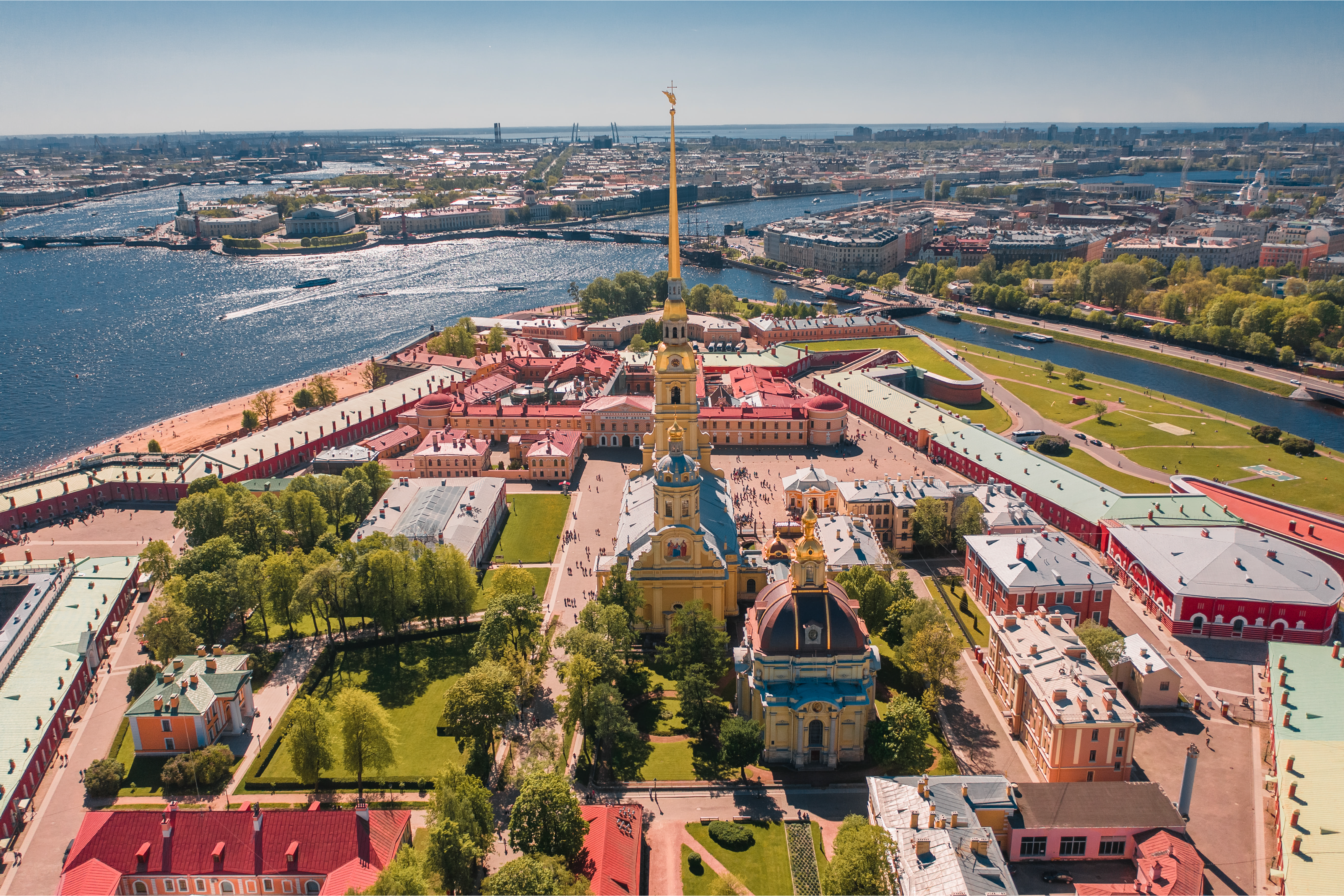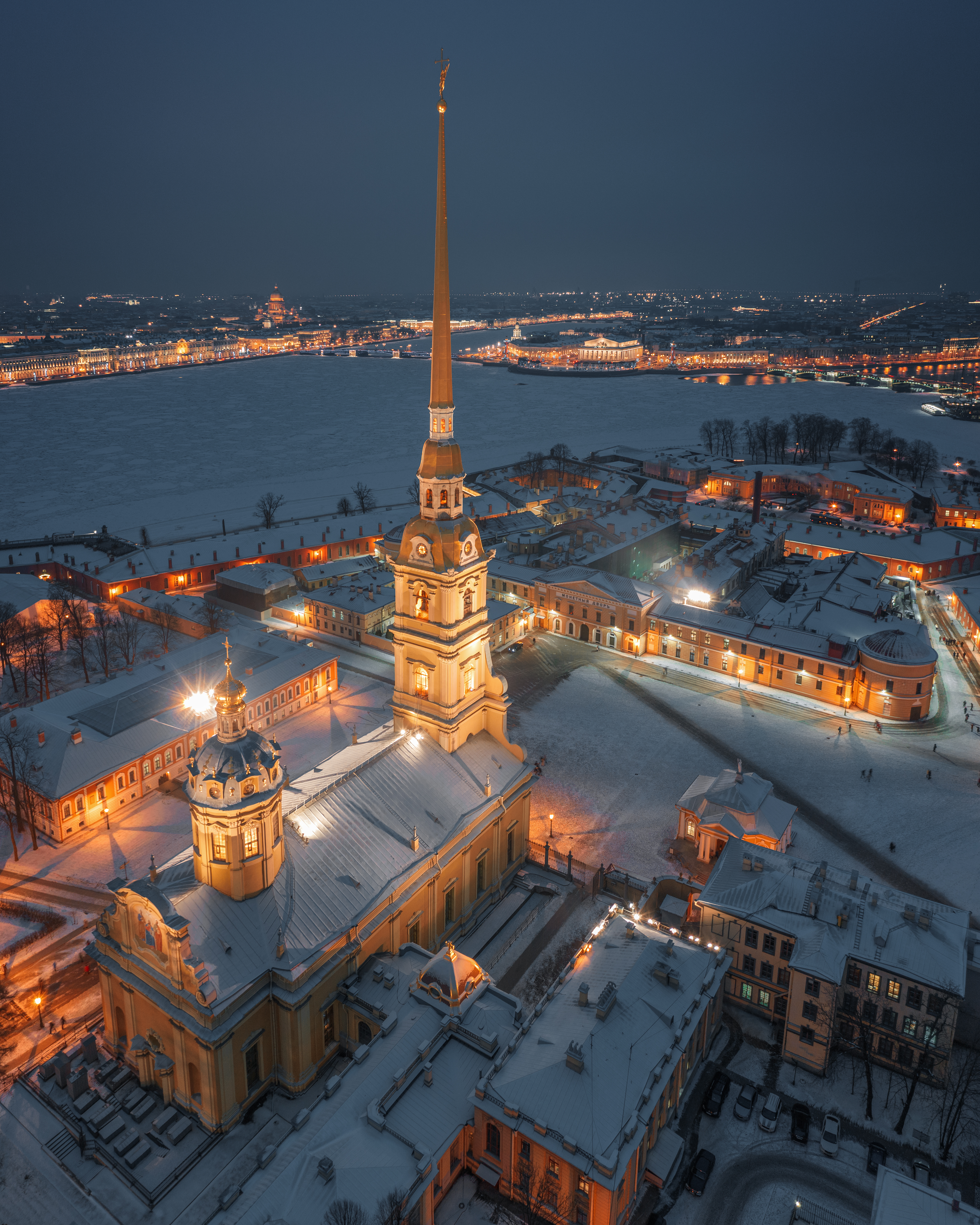 Back
Back
Peter and Paul Fortress

Zayachy Island
The history of St. Petersburg started with this fortress.
The Peter and Paul Fortress, founded by Peter I in 1703, is a monument of fortification art of the 18-20th
centuries. The dominating structure of the architectural ensemble is the Peter and Paul Cathedral, where the memorial tombs of all Russian emperors are located.
The Peter and Paul Fortress was founded on May 27, 1703. As per the legend, Peter I himself chose a place for a new fortress – a small Zayachy (Hare) Island (in Finnish – Jänissaari), situated at the mouth of the Neva River. The hexagon-shaped citadel was built according to a project drawn up by the French engineer J.G. Lambert with contribution from the tsar himself. Six curtain walls connect six mighty bastions named after the closest associates of Peter I.
The defense system is secured from the west and east by the Ioannovsky and Alekseevsky ravelins. Two bridges – Ioannovsky and Kronverksky – connect Zayachy and Petrogradsky islands. The fortress was consecrated on October 1, 1703. St. Andrew’s flag was hoisted on the Gosudarev (Tsar) bastion, and three hundred cannons were mounted on the ramparts. On June 29, 1703, a small wooden church was laid in the middle of the fortress in the name of Holy Apostles Peter and Paul. It was later replaced by a stone cathedral erected in 1712–1732. From 1731 to 1858, the Peter and Paul Cathedral qualified as a cathedral church of the capital; later it was included in the court department. The cathedral served as a mausoleum of the reigning Romanov dynasty. Russian emperors and empresses from Peter I to Nicholas II are all buried here, with the exception of Peter II and Ivan VI. A slype connects the cathedral with the Grand Ducal Burial Chapel.
During the 18-19th
centuries, buildings and structures of various purposes were built on the territory of the fortress: the Boat House, the Artillery Storehouse, the Mint, the Commandant’s and Engineer’s Houses, a guardhouse, etc. As long ago as the 18th century, the fortress became a place of detention for the prisoners of State and in the 19th century it turned into Russia’s main political prison. The fortress was first opened to visitors at the beginning of the 19th century, under Emperor Alexander I. In the 1900s, tours of the imperial necropolis were held in the Peter and Paul Cathedral. In 1924, the Trubetskoy Bastion prison was turned into a museum. In 1954, the complex of buildings of the Peter and Paul Fortress was transferred to the State Museum of the History of Leningrad (St. Petersburg).
On the territory of the fortress in the Commandant’s House there is a museum of the 18-19th century city life; the Trubetskoy Bastion houses an exhibition dedicated to the prison, where political detainees were kept. Among the prisoners were members of “Narodnaya Volya” revolutionary organization, ministers of the tsarist government, L.D. Trotsky, F.M. Dostoevsky and N.G. Chernyshevsky. The Boat House accommodates the first ship that gave rise to the Russian fleet. Both the territory of the fortress and the beach are open to the public.
There was a system of underground passages in the fortress. Some of them are now open to visitors: the entrance to the postern can be found in the Gosudarev (Tsar) bastion.







 Listen
Listen  Download
Download